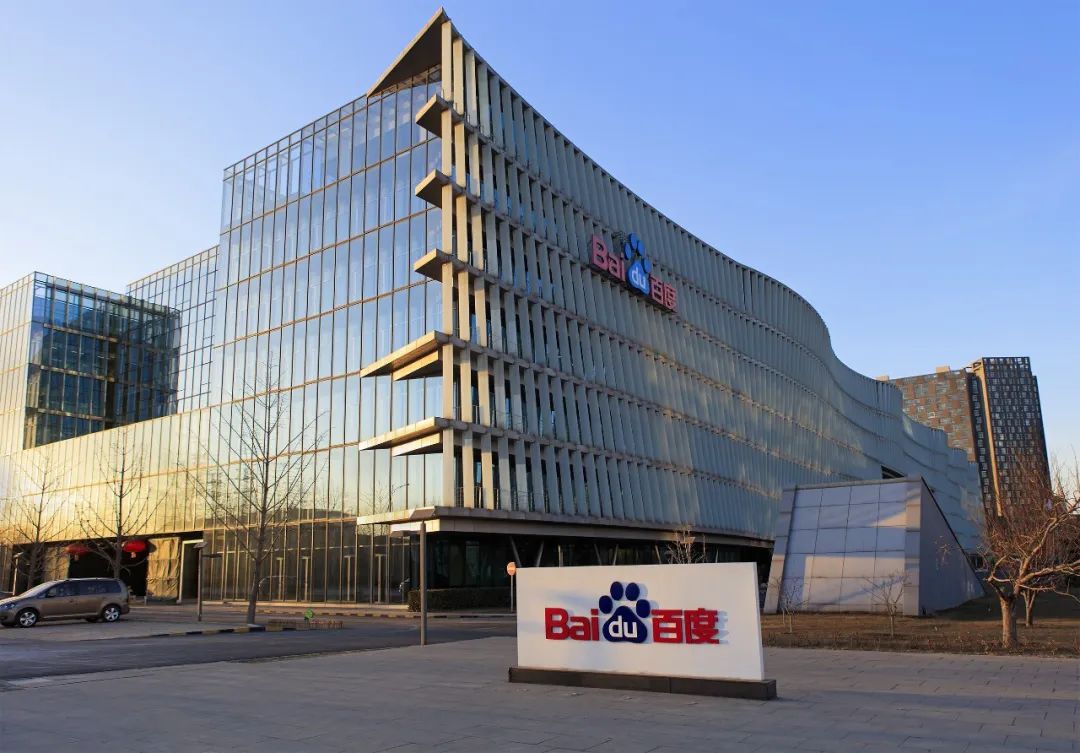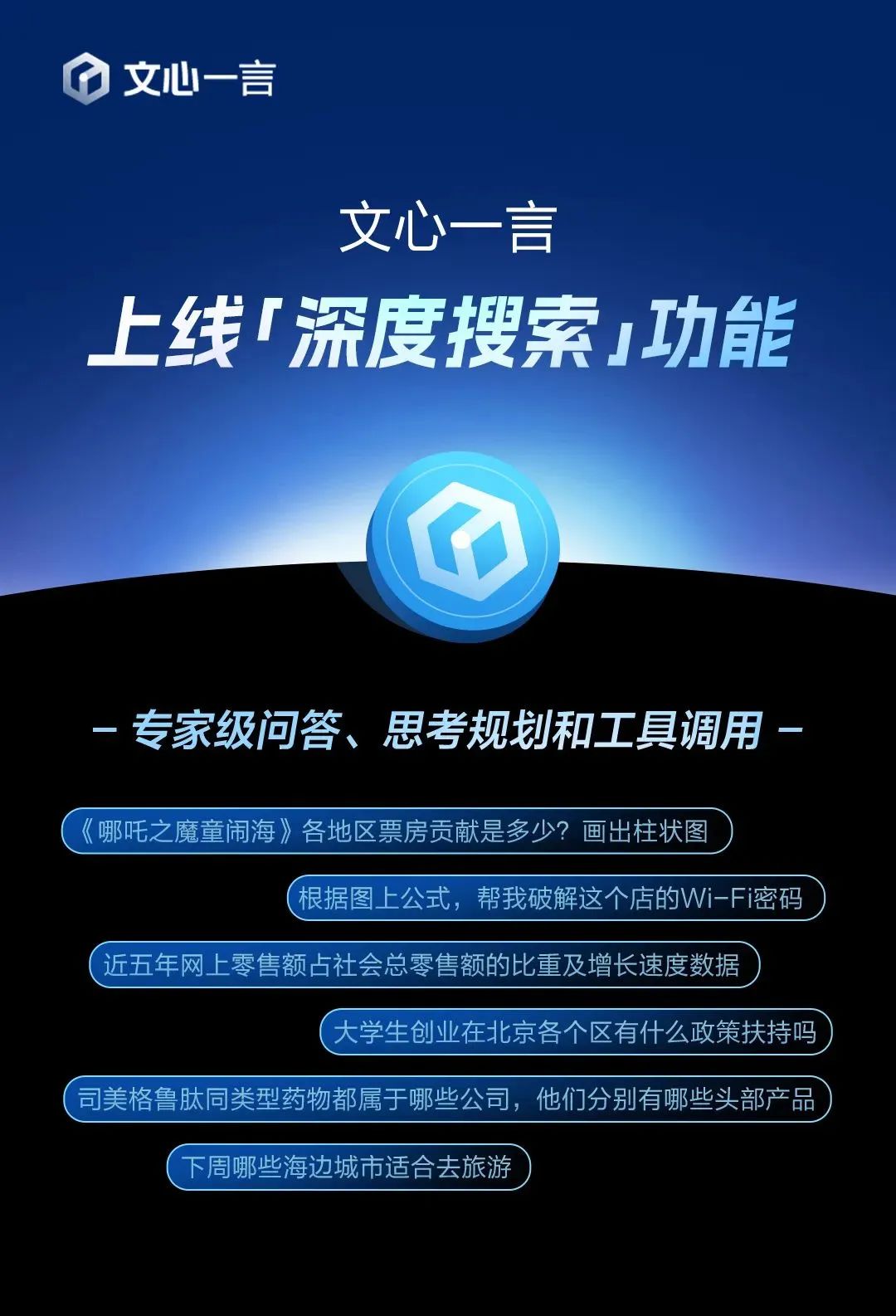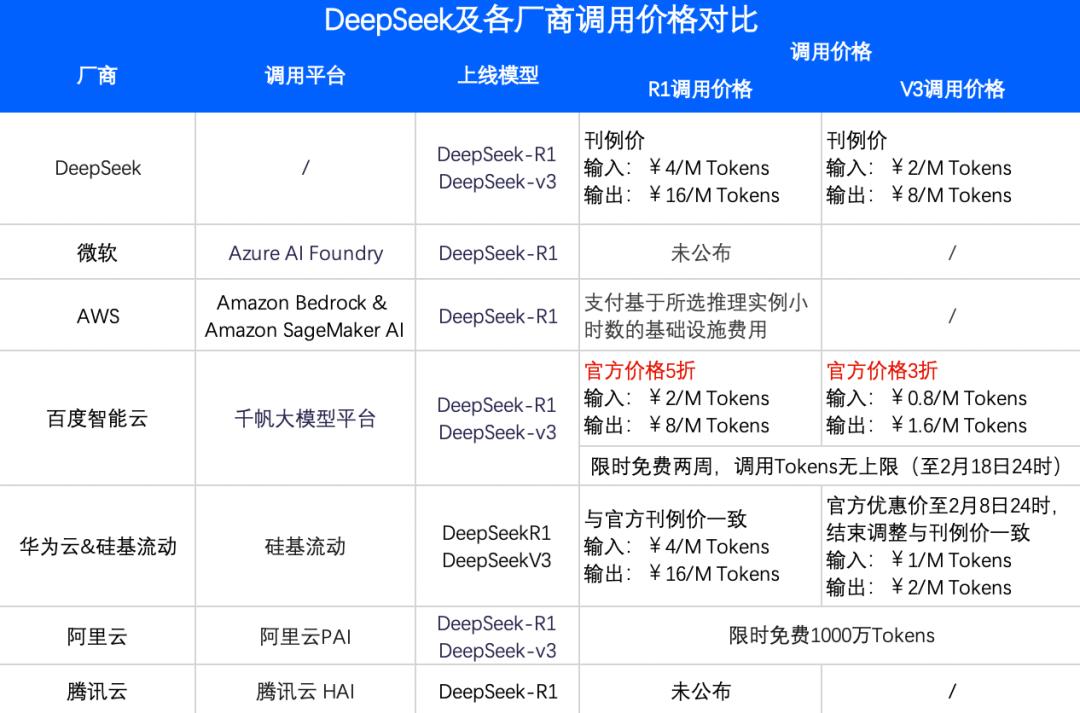The Significance of ERNIE Bot's Open Sourcing
![]() 02/19 2025
02/19 2025
![]() 556
556

By Xu Wenwen
Edited by Zhang Xiao
The ripple effects triggered by DeepSeek's success have been intensifying.
Yesterday (February 13), Baidu officially announced that starting from April 1, 2025, ERNIE Bot will be completely free for all PC and App users. They will be able to experience the latest ERNIE series models, along with features such as ultra-long document processing, professional search enhancement, advanced AI painting, and multilingual dialogue.
Additionally, the deep search function, soon to be available on ERNIE Bot's official website and App, will also be free from April 1.

Image/Baidu Official Weibo
Today (February 14), Baidu further announced that in the coming months, it will successively launch the ERNIE Bot 4.5 series, which will officially open source starting from June 30, 2025.
Notably, within these two days, both OpenAI and Google have also increased the openness of their large models, announcing the free opening of their large model products.
OpenAI is also expected to move towards open sourcing. It is reported that OpenAI is currently discussing the public release of AI model weights.
The consistent move towards open sourcing by AI giants sends a strong signal:
After two years of rapid development, new changes have emerged in the implementation paradigms of large model technology on both the B and C ends. This puts forward higher requirements for large model vendors—they must not only stay at the forefront of large model technology but also accelerate the exploration of cost reduction paths for the implementation of large models, taking the lead as we approach their explosive application phase.
Baidu's decision to open source ERNIE Bot is based on the above two points.
On the one hand, over the past two years, Baidu has been one of the AI enterprises with the greatest investment, fastest technological iteration, and widest and deepest exploration of B-end industrial implementation and C-end application in the large model wave.
As of November 2024, ERNIE Bot had a user base of 430 million, with an average daily number of calls exceeding 1.5 billion, an increase of over 30 times compared to 2023.
On the other hand, from model inference to model training, Baidu has achieved effective cost reduction through technological innovation.
As AI giants like Baidu, OpenAI, and Google take the lead in making this shift, and as a greater degree of technological and ecological openness becomes an industrial consensus, the popularization of AI technology is accelerating towards reality.
01
From To C to TO B, why has open sourcing become a necessary path for the large model industry?
Baidu is not alone in leading this wave of open sourcing of large models.
On February 6, OpenAI announced that ChatGPT Search would be open to everyone, allowing users to directly use the search function on the OpenAI official website homepage without registration. On the same day, Google also announced that it would open its latest Gemini 2.0 model to everyone, including three versions: Flash, Pro Experimental, and Flash-Lite.
Then, yesterday, after Baidu announced the free opening, OpenAI quickly followed up. Sam Altman announced on the social media platform X that OpenAI's new GPT-5 large model would be unlimitedly open to free users of ChatGPT, although the more intelligent version of GPT-5 would still require a fee.
It is not difficult to understand the reason behind the unified open stance of these giants.
Over the past two months, the ripples caused by DeepSeek's investment in the large model industry have continued to spread. The low training cost demonstrated by DeepSeek-v3, the low inference cost demonstrated by DeepSeek-R1, and the impressive capabilities of DeepSeek applications in logical thinking, Chinese, programming, etc., have quickly propelled it to become the most globally watched AI company around the Spring Festival.

And the possibility it demonstrates of reproducing advanced models with low computing power costs, along with the explosion of DeepSeek applications, somehow confirms one point:
The large model industry has now entered a new stage that requires open sourcing.
Objectively speaking, open sourcing and closed sourcing are not completely opposed as technical routes; they only present different characteristics at different stages of industrial development.
For example, in the early stages, model open sourcing was more like marketing. Meta's Llama chose semi-open sourcing, only making part of the parameters and configuration files open source, but this could to some extent affect the verifiability and credibility of the model.
However, this year, after large models have passed the initial stage of development, they are accelerating into the stage of explosive AI application. At this stage, the open source route is obviously more conducive to the dissemination of large model technology and increasing adoption rates.
As Robin Li said, "Ultimately, what is most important is application, not which large model is used. Whether it is open source or closed source, what is more important is what kind of value can be created at the application layer."
For example, in the B-end market, the "2024 Survey Report on the Application Status of AI Large Models in Chinese Enterprises" points out that the penetration of AI large models in enterprises is still in its early stages, but 55% of enterprises and institutions that have already deployed large models believe that they have seen clear business value brought by large models.
The problem is that for many enterprises, especially small and medium-sized enterprises, cost, technology, talent, and industry solutions remain the main challenges in implementing large models. Their investment in AI large models remains a contradictory attitude of being positive yet cautious.
IDC also mentioned in the "Survey on the Application of Generative AI and Large Models in Chinese Small and Medium-sized Enterprises" that the costs required for adopting large models and AI technology in terms of hardware, software, training, and data processing are also a challenge faced by many small and medium-sized enterprises.
Focusing on the C-end market, although there has not yet been a true super app in the industry, users' habits of using large model applications are accelerating, and comprehensive openness is also the general trend.
In other words, comprehensive open sourcing can better meet the ever-growing market demands of B-end enterprise customers and C-end users.
We have seen that when the wind direction changes, leading players in large models such as Baidu and OpenAI keenly capture the signals and take the lead in opening source and opening up with a more proactive stance.
Taking Baidu as an example, in addition to fully opening up ERNIE Bot on the C-end, Baidu is also gradually increasing its openness in the large model ecosystem on the B-end.
On February 3, Baidu Intelligent Cloud officially announced that the two models, DeepSeek-R1 and DeepSeek-V3, have been listed on its Qianfan ModelBuilder platform.
It is worth noting that Baidu has reduced the prices of these two models—customers' prices for calling these two models on the Qianfan ModelBuilder platform are only 30% of the official list price for DeepSeek-V3 and 50% of the official list price for DeepSeek-R1, while also providing limited-time free services.

On the other hand, over the past year, the price reduction of the flagship ERNIE Bot large model has also exceeded 90%, and the main models are also completely free, minimizing the cost of enterprise innovation and trial and error.
Of course, more importantly, for the latest ERNIE Bot 4.5 series that will be launched next, Baidu will also officially open source it starting from June 30—it will face the market with a more proactive stance and jointly promote industrial development.
TideTI also noticed that, based on the information currently released, Baidu's open stance is more proactive than that of OpenAI—OpenAI is considering open sourcing AI models that have been previously released, while Baidu's open sourcing action is focused on the latest series of models that will be released next.
This means that Baidu is already taking the lead in anticipation of the upcoming wave of explosive AI application of large models.
02
Based on technological innovation, Baidu has found a cost reduction path for large model technology
"Looking back at the past few hundred years, most innovations have been related to cost reduction, not only in the field of artificial intelligence but even beyond the IT industry." On February 11, at the World Governments Summit 2025 held in Dubai, Robin Li said so.
In his view, if the cost can be reduced by a certain amount or percentage, it means that productivity will also increase by the same percentage. "I believe that this is almost the essence of innovation. And today, the speed of innovation is much faster than before."

Robin Li, founder of Baidu, Image/Baidu Official Weibo
Behind Robin Li's statement, today's Baidu has found a cost reduction path for large model technology. And the support behind it is technological innovation.
Specifically, from large model training to inference, Baidu's current cost reduction effects are relatively significant.
First, let's look at training costs. Baidu's self-developed Kunlun chip and the construction of the Wan Card Cluster provide computing power support for large model training. The Baidu AI Heterogeneous Computing Platform can handle the processing of massive data, the training of ultra-large models, and the inference of high-concurrency businesses, accelerating AI tasks and serving as a more foundational infrastructure.
Among them, the performance advantage of Kunlun chips lies in their ability to run large-scale models with fewer computing resources, thereby reducing the amount of computation required for the inference and training of large models and directly lowering computing power costs.
The advantage of large-scale clusters lies in their ability to improve computing resource utilization through task parallel scheduling, elastic computing power management, and other methods, avoiding idle computing power, increasing the computing efficiency of single tasks, and reducing overall computing power costs. Recently, Baidu Intelligent Cloud successfully lit up the Kunlun chip third-generation Wan Card Cluster, which is the first domestically developed Wan Card Cluster to be officially lit up. Baidu plans to further expand it to 30,000 cards in the future.

Image/Baidu Official Website
Additionally, with the support of the capabilities of the Baidu AI Heterogeneous Computing Platform, Baidu has also achieved efficient deployment and management of large-scale clusters.
For example, it has increased the effectiveness of bandwidth to over 90%, effectively reduced the energy consumption of model training through innovative cooling solutions, and continuously optimized and improved the distributed training strategy of models, increasing the cluster MFU (GPU resource utilization rate) for training mainstream open-source models to 58%.
Now let's look at the inference cost of models. Some industry insiders have analyzed that one of the biggest reasons behind the comprehensive opening up of ERNIE Bot this time may be the continuous reduction of inference costs.
"Baidu has a relatively large advantage in model inference deployment, especially with the support of the PaddlePaddle deep learning framework, where parallel inference, quantized inference, etc., are self-developed technologies of PaddlePaddle for large model inference. The joint optimization of PaddlePaddle and ERNIE Bot can achieve improved inference performance and reduced inference costs," he further analyzed.
Specifically, Baidu is the only AI enterprise in China that possesses a full-stack AI technology architecture with four layers: "chip-framework-model-application." This means that Baidu has the "thickest and most flexible" technical foundation in China, enabling end-to-end optimization, which not only significantly improves the efficiency of model training and inference but also further reduces overall costs.
For example, the lower inference prices of DeepSeek-R1 and DeepSeek-V3 on the Qianfan ModelBuilder platform are based on technological innovation—the deep integration of Baidu Intelligent Cloud in inference engine performance optimization technology, innovation in inference service engineering architecture, and full-link security assurance for inference services are important reasons for reducing prices.
Based on the above points, Baidu's cost reduction path is actually very clear—based on self-developed technological innovation, improving the resource utilization rate of large models during training and inference.
We have also seen that following this cost reduction path for large model technology, Luobo Kuaipao is also accelerating its landing at a lower cost.
In May last year, Luobo Kuaipao released the world's first large model supporting L4 autonomous driving, further enhancing the safety and generalization of autonomous driving technology. With the power of large models, autonomous driving can "get on the road faster," and its ability to handle complex traffic scenarios is on par with that of Waymo.
Focusing on the sixth-generation driverless vehicle of Luobo Kuaipao, it fully applies the solution of "Baidu Apollo ADFM large model + hardware products + security architecture," ensuring the stability and reliability of the vehicle through a 10-layer safety redundancy scheme and a 6-layer MRC safety strategy, with a safety level even close to that of the domestic large aircraft C919.
It is noteworthy that in this journey, Luobo Kuaipao's driverless vehicles have attained or nearly achieved the industry's lowest cost threshold. Specifically, its sixth-generation autonomous vehicle boasts a lower production cost than Tesla's anticipated cybercab for 2026 mass production and is a mere one-seventh of Waymo's cost.
This milestone has significantly accelerated Luobo Kuaipao's commercialization process.
To date, Luobo Kuaipao has commenced road testing in over a dozen cities, including Beijing, Shanghai, Guangzhou, Shenzhen, and Hong Kong. Baidu has disclosed that the platform has accumulated over 8 million orders. Additionally, Robin Li has highlighted that Luobo Kuaipao's L4 autonomous driving technology has surpassed 130 million kilometers of cumulative safety testing, with an accident rate one-fourteenth that of human drivers.
Concurrently, the extensive testing conducted by Luobo Kuaipao under the complex urban road conditions in China portends its expansion into emerging markets such as the Middle East and Southeast Asia.
03
Amidst this surge in application adoption, what are Baidu's next steps?
"We are living in an era of unprecedented excitement. Historically, Moore's Law predicted a doubling of performance and a halving of costs every 18 months. However, in the realm of large language models, we now witness inference costs plummeting by over 90% every 12 months—a pace far surpassing the computer revolution of recent decades," said Robin Li at the February 11 summit.
Reflecting on the large model landscape over the past year, from price wars to vendor differentiation, the rise of Kimi, the explosion of AI Agents, the emergence of DeepSeek, and the ensuing wave of open-source large models, it becomes evident that:
The large model industry is accelerating into a new era, characterized by swifter technological iterations, broader innovation horizons, faster cost reductions, and an imminent explosion in application potential.
From a market competition perspective, this signifies a future where competition among large model manufacturers will diversify, encompassing technological innovation, ecosystem empowerment, openness, cost reduction capabilities, and application development.
However, focusing on Baidu's cost reduction strategy, the core competition in the long run hinges on one crucial aspect—who can sustainably lead the technological innovation in large models.

This emphasis on innovation aligns with Baidu's long-term strategy.
"Innovation cannot be premeditated. Its timing and origin are unpredictable, but what we can do is cultivate an environment conducive to innovation," emphasized Robin Li.
This philosophy aligns with Baidu's continuous investment in chips, data centers, and cloud infrastructure, despite cost reductions through technological advancements, to foster better and smarter models for future generations.
For instance, Baidu is continuously expanding its large model matrix.
Currently, the ERNIE Bot large model matrix encompasses flagship models like Ernie 4.0 Turbo, lightweight models such as Ernie Speed, and a suite of thinking and scenario models built upon foundational models to cater to diverse application needs.
In the third quarter of last year, Baidu introduced two enhanced lightweight models: Ernie Speed Pro and Ernie Lite Pro.
This year, based on recent announcements, the ERNIE Bot 4.5 and 5.0 series are also set to be unveiled.
Furthermore, Baidu's proactive approach to open-sourcing and openness underscores its commitment to accelerating large model applications in B-end business scenarios while exploring C-end applications.
Ultimately, as Robin Li noted, "While you might stumble upon a shortcut, such as training a model for just $6 million, the path to discovering that shortcut likely involved billions of dollars in exploration."
For Baidu, fostering an innovative environment through relentless technological investment is a "steady and sure" approach. While it may not be the fastest, it is robust, grounded, and laden with immense potential opportunities.
Firstly, the ERNIE Bot large model already boasts the highest call volume in China. With open-sourcing, this figure is poised to surge, further extending the model's utilization.
Secondly, within the large model ecosystem, Baidu's openness has already established an ecological advantage.
For example, Baidu launched the open-source PaddlePaddle framework in 2016. Its Qianfan large model platform hosts the industry's largest number of access models, supporting nearly a hundred mainstream models from both domestic and international sources.
It is foreseeable that with the intensified promotion of open-sourcing and openness in large models, Baidu is poised to take the lead in the new round of large model competition.





